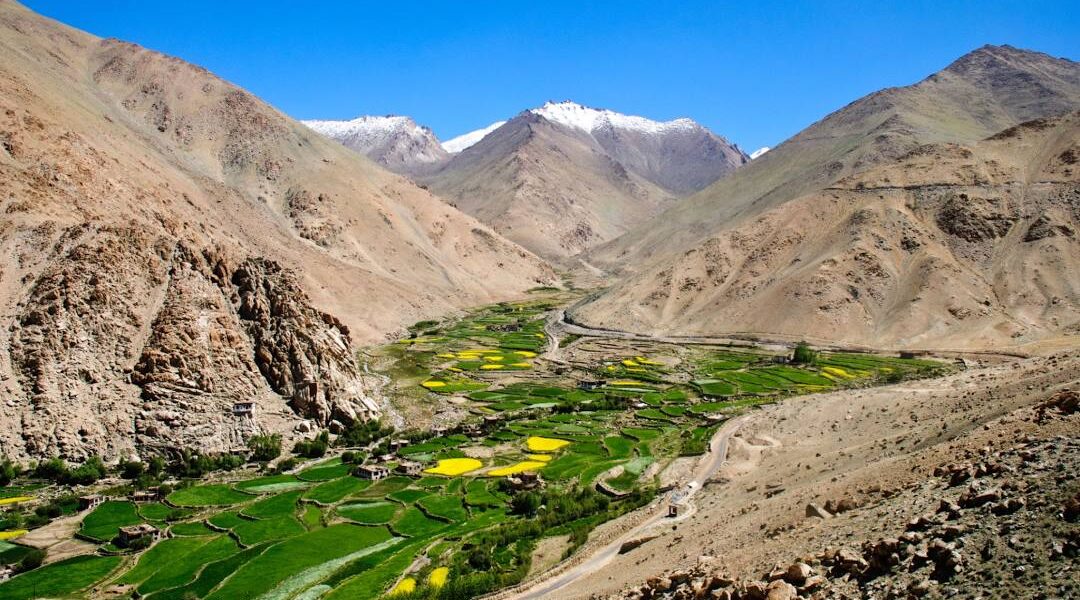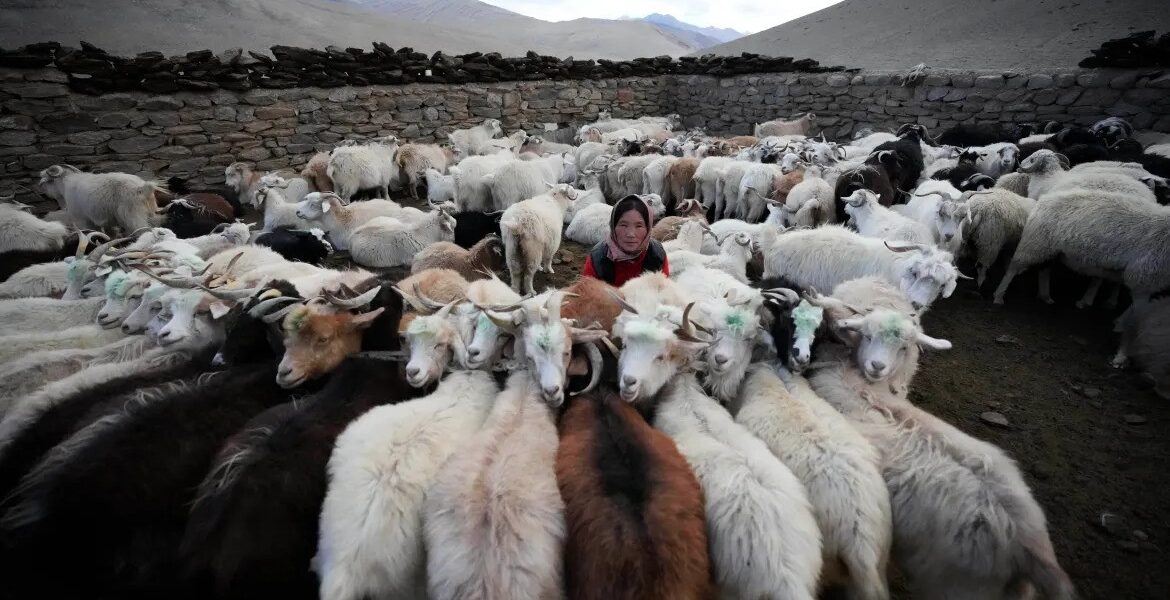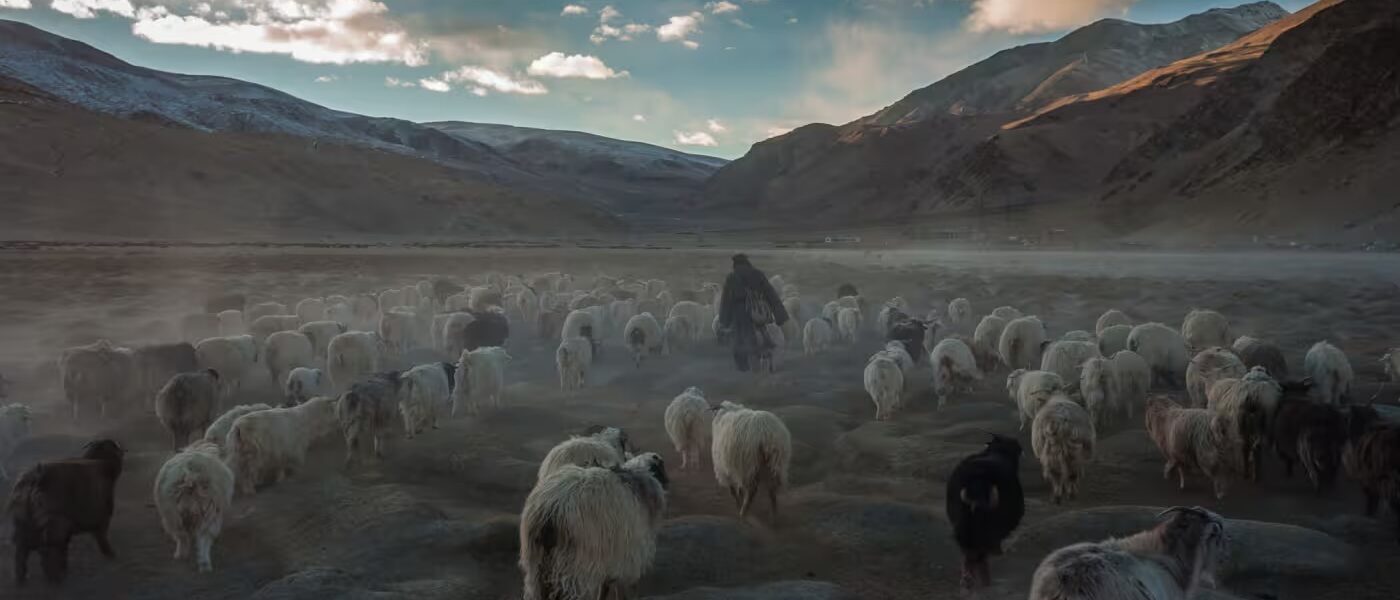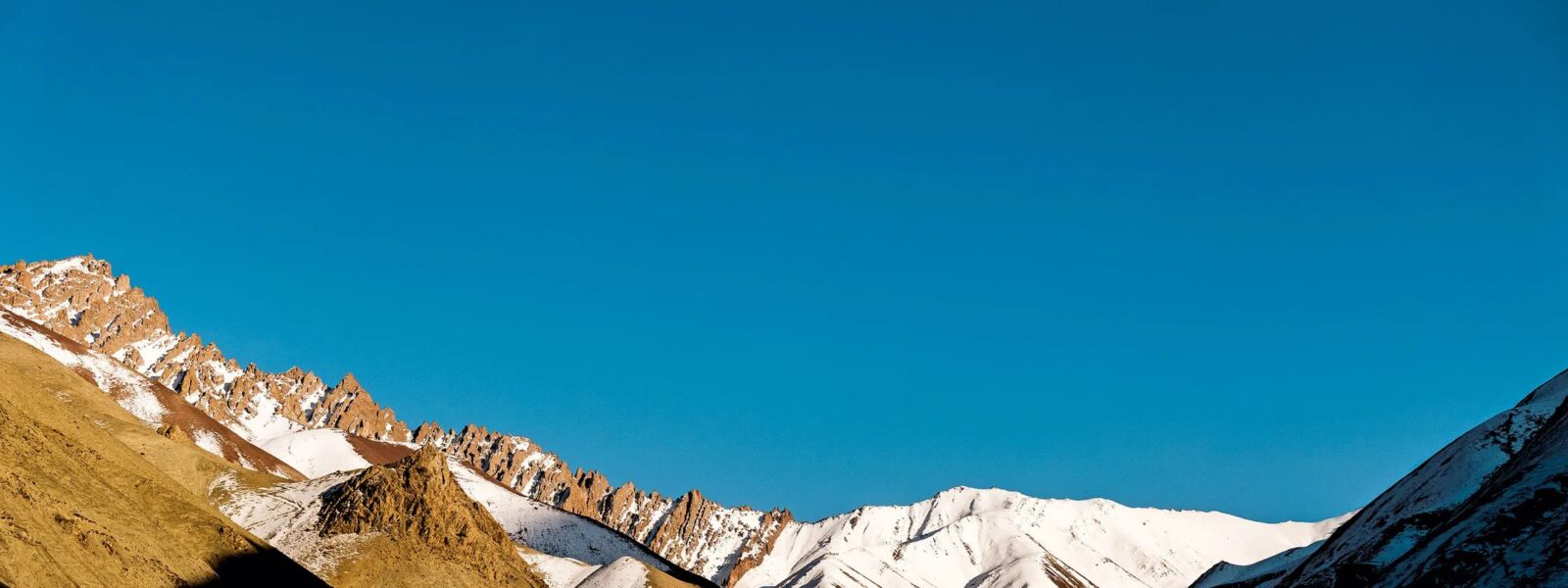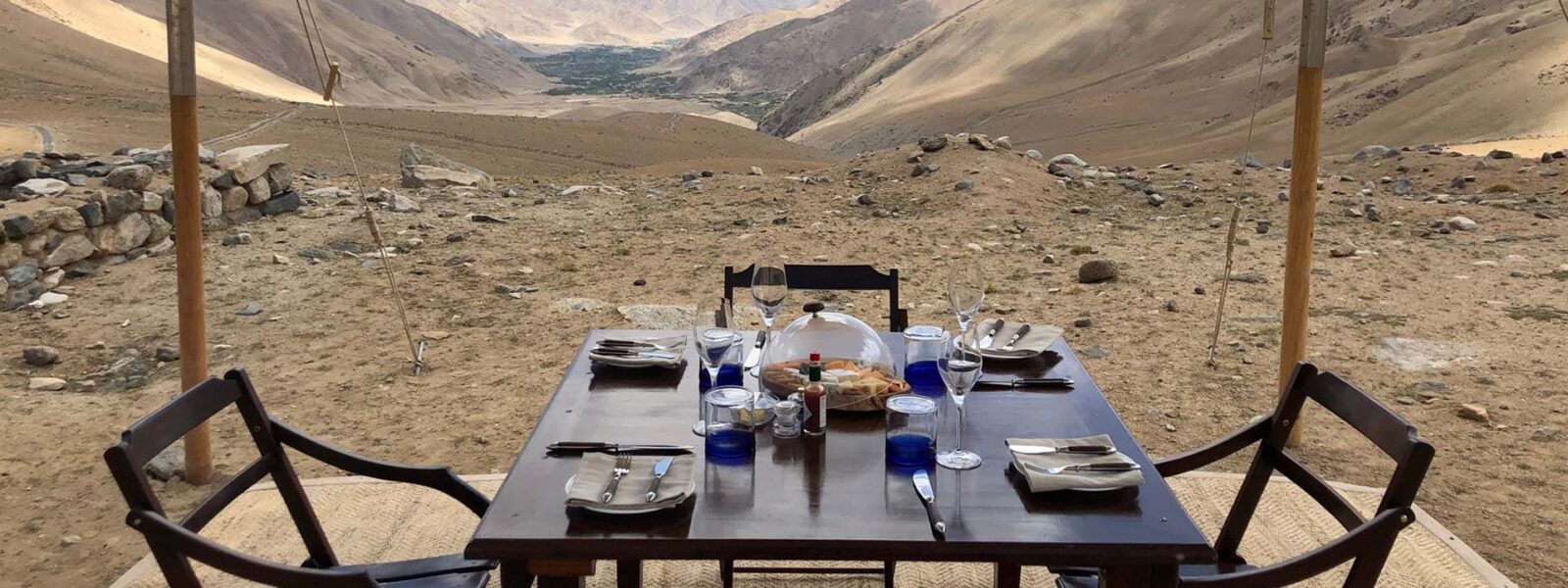Introduction to Sakti Village, Ladakh
Tucked away in the rugged mountains of eastern Ladakh lies Sakti Village, a peaceful and lesser-known gem just 40 kilometers from Leh. Surrounded by high-altitude ridgelines and golden desert slopes, Sakti remains quietly untouched by mass tourism, offering travelers a chance to experience the Himalayas through a more intimate lens. Whether you’re seeking serene landscapes, ancient monasteries, or offbeat hiking routes, this quiet Ladakhi village has a story to tell—and it’s one worth listening to.
Sakti sits at an elevation of approximately 3,800 meters, framed by dramatic cliffs and washed in the pastel tones of a cold desert. What makes it remarkable isn’t just its remote beauty—it’s the fusion of spiritual heritage, nomadic culture, and an environment that forces you to slow down and observe. Time moves differently here. Winds whisper ancient chants through the alleyways, and prayer flags flutter above rooftops with messages to the sky.
Historically, Sakti has been a waypoint for Buddhist pilgrims traveling between Leh and Pangong Lake. It serves as the gateway to the Takthok Monastery—the only Nyingma monastery in Ladakh with a sacred meditation cave said to have been used by Guru Padmasambhava. But the village’s charm lies beyond its spiritual sites. With its modest stone houses, barley fields, and traditional Ladakhi kitchens filled with the scent of butter tea and tsampa, Sakti offers an immersive taste of mountain life—quiet, contemplative, and enduring.
Travelers arriving in Sakti often speak of the silence. It is not empty silence, but a full one—filled with the murmur of the wind, the bark of distant sheepdogs, and the occasional laughter from a rooftop. In a world of itineraries and checklists, Sakti invites you to stay still. Whether you are a solo wanderer, a photographer chasing light, or a couple seeking moments of real connection, this village will gently pull you into its rhythm.
In this guide, we will take you through the stories, sights, and secrets of Sakti Village: from its hidden Himalayan trails to its spiritual roots at Takthok and Chemrey Monasteries, and into the soul of a village where stillness becomes a form of discovery. Come with time. Come with curiosity. Sakti is not just a place to visit—it’s a place to feel.
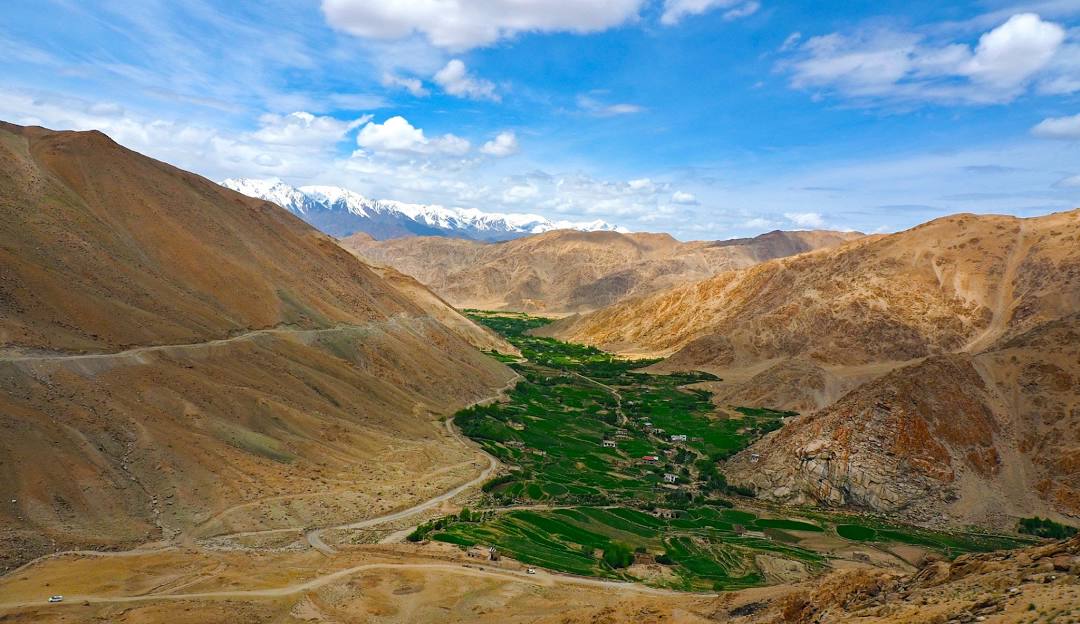
Spiritual Wonders: Takthok Monastery & Chemrey Monastery
In the heart of Sakti’s soul lies its connection to two remarkable centers of spirituality: Takthok Monastery and Chemrey Monastery. These monasteries are not only architectural marvels, but also living sanctuaries of Ladakh’s deeply rooted Buddhist traditions. They stand quietly against the wind-shaped cliffs and ochre hills, guiding pilgrims, monks, and curious travelers on journeys of reflection and inner stillness.
Perched dramatically against a rocky cliff, Takthok Monastery is unlike any other in Ladakh. Its name literally means “rock roof,” and that is not just poetic—it’s literal. Built into a sacred cave believed to be sanctified by Guru Padmasambhava in the 8th century, this is the only Nyingma monastery in the region. Inside, the scent of yak butter lamps clings to the stone walls, and flickering candlelight illuminates ancient murals and thangka paintings. The main prayer hall feels alive with centuries of chanting and meditation, and the cave itself exudes an almost tangible energy. It’s a place not merely seen—but deeply felt.
The annual festival at Takthok is one of its most sacred events, where masked dances, rituals, and spiritual teachings draw both locals and travelers. For those seeking silence and solitude, visiting outside the festival season allows for a more meditative experience. Use the moment to sit, observe, and breathe—it’s the kind of place that rewards stillness.
Just a short drive from Sakti, Chemrey Monastery rises elegantly like a stone staircase against the mountainside. This 17th-century gompa is affiliated with the Drukpa sect and is known for its towering assembly hall, impressive golden statue of Padmasambhava, and an extensive collection of scriptures. But what sets Chemrey apart is its peaceful atmosphere. The monastery is often overlooked by mainstream itineraries, making it a perfect destination for those drawn to quiet, lesser-trodden paths.
Every November, Chemrey hosts a colorful festival featuring the vibrant cham dance, where monks in elaborate masks reenact Buddhist legends. For photographers, cultural seekers, and spiritual travelers alike, this is a highlight not to be missed. Even outside festival times, the views from the monastery alone—overlooking barley fields, village rooftops, and the endless sky—are enough to inspire awe.
Together, Takthok and Chemrey Monasteries represent two faces of Ladakh’s spiritual heritage: one raw and mysterious, the other refined and majestic. Visiting them not only offers insight into Himalayan Buddhism but also opens a quiet door inward. In Sakti, faith is not a spectacle—it is a presence in the land, in the people, and in the silence between the chants.
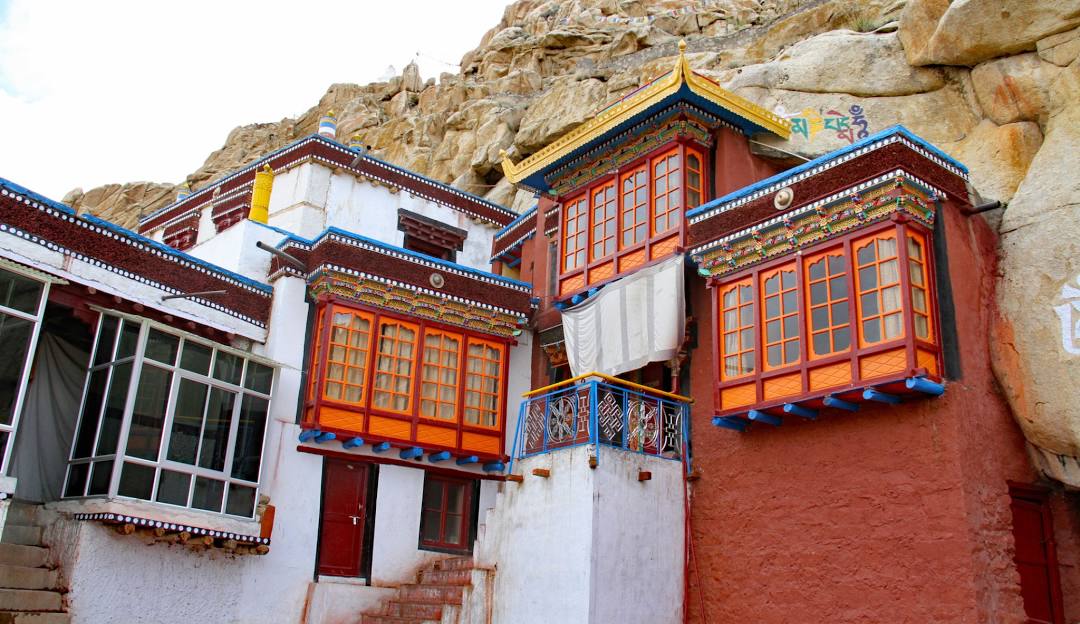
Hidden Himalayan Trails from Sakti
For those drawn to the rhythm of footsteps and the solitude of high-altitude air, Sakti Village opens the door to a network of hidden Himalayan trails. This region offers more than just scenic drives and spiritual silence—it invites you to walk. Far from the crowded routes of the Markha Valley or Pangong circuit, the trails around Sakti are quieter, more intimate, and often walked only by locals, yaks, and the occasional nomadic herder.
Short day hikes begin right from the edge of the village, winding through barley fields and ascending towards rocky ridges that offer panoramic views of the Indus Valley. One popular route is the moderate climb behind Takthok Monastery, leading to remote meditation caves and highland pastures. Along the way, hikers pass through prayer-flag-draped chortens, natural springs, and perhaps even a herd of blue sheep grazing on the slopes. These routes are perfect for those seeking a peaceful escape without the demands of a full expedition.
For more adventurous trekkers, Sakti can serve as a base for exploratory treks into the Changthang Plateau or as a launching point for offbeat multi-day journeys connecting to Durbuk, Zingral, or Hemis. These are routes not often marked on maps but passed down through generations of shepherds and nomads. Treks in this area typically involve crossing high passes, walking along ancient trade paths, and camping in pristine valleys where stars burn impossibly bright.
If you’re looking to combine cultural immersion with trekking, consider planning a village-to-village hike—a journey that not only offers natural beauty but allows you to stay with local families each night. Many homestays in Sakti are now part of Ladakh’s eco-tourism movement, welcoming walkers who wish to experience life at a slower pace. Each home offers simple, warm food, stories by the hearth, and a glimpse into daily life shaped by the mountains.
The best time to explore these trails is from June to September, when the snow has melted, and the high passes are open. It is essential to acclimatize in Sakti for a day or two before undertaking strenuous hikes, as the altitude can be deceptive. Hiring a local guide not only ensures safety but also enriches the experience—they know the terrain, the weather shifts, and the legends behind every rock and valley.
In a world where many Himalayan trails are becoming well-worn and heavily documented, the paths from Sakti remain refreshingly untamed. These are not just physical routes but doorways into Ladakh’s deeper landscapes—geographical, spiritual, and cultural. To walk here is to touch something timeless, and to return with stories you didn’t plan to find.
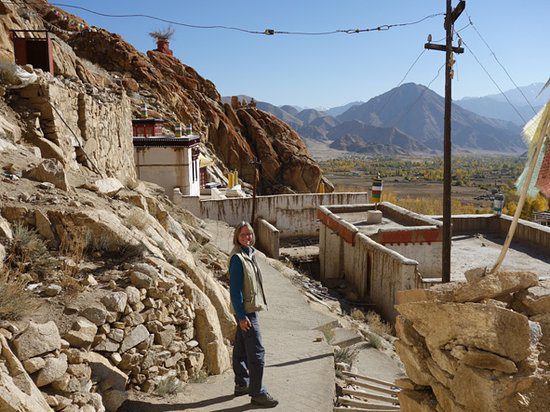
Where to Stay: Homestays in Sakti Village
In Sakti Village, the most meaningful accommodations aren’t found in hotels with polished lobbies or manicured lawns. They’re found in the warm, smoky kitchens of Ladakhi homes, where butter tea is poured without a word and the silence of the mountains slips in through small wooden windows. Choosing a homestay in Sakti is not just a budget-friendly decision—it is an act of cultural participation, a doorway into a rhythm of life you can’t download or schedule.
Most homestays in Sakti are simple, yet profoundly welcoming. Rooms are modest—often with thick carpets, traditional woodwork, and thick walls to shield from the Himalayan chill. While Wi-Fi may be spotty and power outages common, you’ll find something richer: hospitality that is deeply rooted in respect, spirituality, and unspoken generosity. Hosts typically offer two or three meals per day, often including local specialties like thukpa, khambir bread, and home-churned butter. Meals are eaten together, cross-legged on the floor, sharing not just food but stories.
Many of these homestays are part of community-run initiatives that support eco-tourism and preserve Ladakhi cultural heritage. By staying in these homes, travelers directly support local families and help reduce migration to urban areas. It’s a form of sustainable travel where your presence becomes a quiet contribution—not an intrusion. In return, you gain an unmatched authenticity: waking up to the sound of a prayer bell, watching barley being threshed in the courtyard, or helping make momo dumplings with three generations under one roof.
In recent years, a few upgraded options have emerged—homestays with attached bathrooms, solar heating, or rooftop terraces overlooking the valley. Yet even these strive to maintain the spirit of Sakti’s slow life. You won’t find flashy signs or online booking platforms. Most homestays operate by word of mouth or through local contacts, which adds to the charm. Often, your driver or guide will know someone—or simply arriving in the village and asking around will lead you to a welcoming home.
For digital nomads and culturally curious travelers alike, staying in a Sakti homestay is more than a place to sleep. It is an invitation to participate in a world governed not by Wi-Fi speed, but by prayer cycles, harvest seasons, and the steady brewing of tea. In a time when so many destinations feel curated and scripted, Sakti still offers the gift of the unscripted—and that begins with where you choose to lay your head.
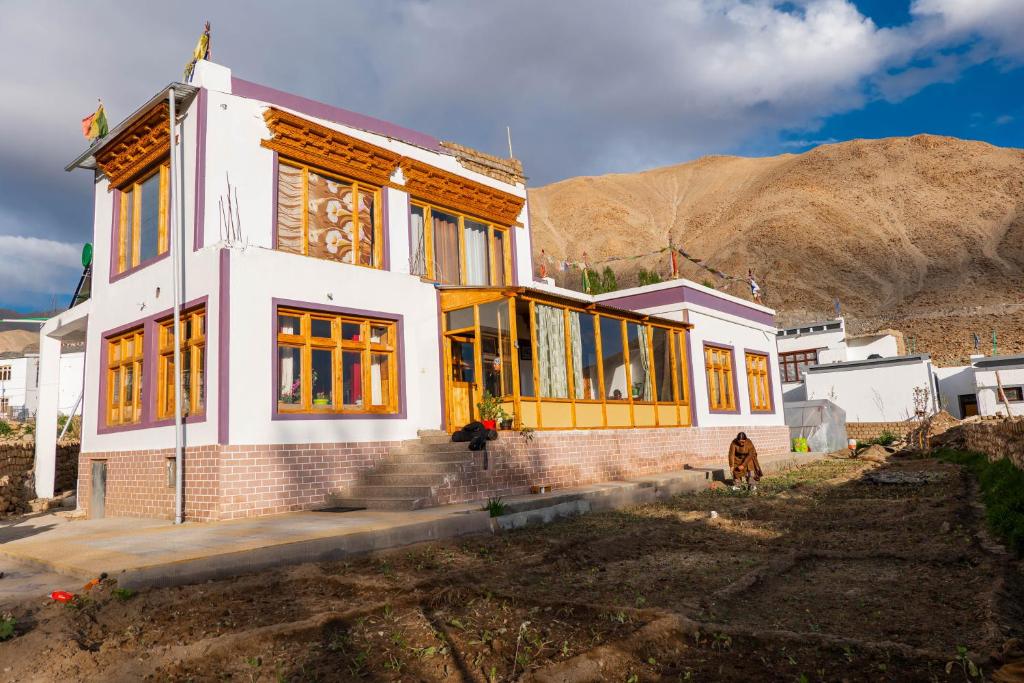
Getting There: How to Reach Sakti Village
Reaching Sakti Village is part of the journey itself—a slow unveiling of Ladakh’s high-altitude drama as you wind through valleys etched by time and wind. Located about 40 kilometers southeast of Leh, Sakti is accessible by road and can be comfortably reached in 1.5 to 2 hours, depending on weather and road conditions. The route is part of the scenic Leh–Chang La–Pangong corridor, making it not only practical but also spectacular.
The most common route begins in Leh, the capital of Ladakh. From the town center, head toward Karu—a dusty roadside junction where chai stalls mingle with mechanics and military convoys. At Karu, you take a detour off the main road toward Sakti. This stretch is less traveled than the roads to Nubra or Pangong, which means fewer vehicles and more time to appreciate the surreal beauty of Ladakh’s barren landscapes. Along the way, you’ll pass modest gompas, grazing herds, and wide expanses of silence.
For those traveling by private vehicle, the roads are well-paved for the most part, but sharp turns, sudden weather changes, and occasional landslides call for cautious driving. A four-wheel drive is not essential, but during shoulder seasons (April and late October), it can be reassuring. Taxis can be hired from Leh for a day trip, but if you plan to explore the surrounding monasteries and trails, consider staying at least one night in Sakti and negotiating a multi-day rate.
Public transport is limited. Local buses do run from Leh to Sakti, but schedules are erratic and often change without notice. If you’re adventurous and flexible with time, the bus offers an authentic experience—rattling along cliff edges with locals, monks, and market-bound produce. However, for comfort and flexibility, a hired taxi or shared cab remains the most reliable option.
If you’re heading toward Pangong Lake or Durbuk, Sakti makes for a scenic overnight stop. Many travelers bypass it en route to the lake, unaware of what they’re missing. Incorporating Sakti into your itinerary—whether at the start or end of your Pangong journey—adds depth to your Ladakh experience, bringing you closer to the land and its quiet, soulful spaces.
The best time to visit is between June and mid-October, when roads are open and the mountain passes are free of snow. During these months, the drive is not only safer but also lined with flowering wild herbs, glacial streams, and the chance of spotting golden eagles soaring overhead. Before heading out, always check the local weather, carry essentials like water, snacks, and altitude medication, and inform your accommodation in Sakti of your arrival time.
Getting to Sakti is not difficult—but it is rewarding. In a region where journeys often matter as much as destinations, the road to Sakti offers a quiet reminder: sometimes the path less traveled leads exactly where you need to be.
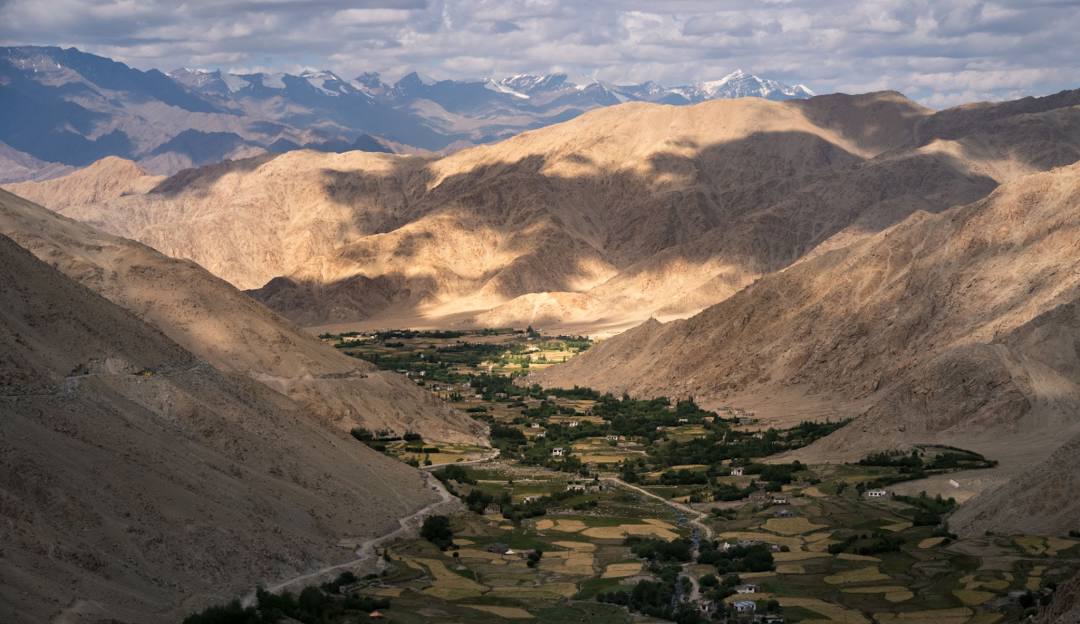
What to See and Do Around Sakti
While Sakti Village itself offers plenty for those who appreciate quiet walks, cultural depth, and soulful silence, the surrounding region unfolds like a map of hidden treasures. Whether you’re a traveler seeking panoramic views, spiritual exploration, or meaningful cultural interaction, there’s far more to experience in and around Sakti than first meets the eye.
One of the most rewarding excursions is a visit to Chemrey Monastery, just 20 minutes away. Overlooking the valley like a watchful guardian, this whitewashed monastic complex rises dramatically from a narrow hillside, offering stunning photography angles at sunrise and sunset. Inside, you’ll find priceless murals, old scriptures, and a palpable sense of serenity. Time your visit during the Chemrey Festival if you can—it’s a rare spectacle of masked dances, sacred chants, and vibrant Ladakhi costumes.
For those seeking more natural beauty, the backroads from Sakti lead to secluded gorges, grazing pastures, and ancient footpaths once used by monks and traders. These hidden Himalayan trails vary in difficulty—from gentle walks to demanding ridge climbs—but they all offer something priceless: unfiltered access to Ladakh’s raw landscape, unspoiled by mass tourism. Bring your camera, your curiosity, and a full water bottle—there’s no signage, only silence and sky.
If you’re driving onward, plan a stop at the village of Zingral, a remote army settlement and resting point en route to Chang La Pass. It’s not a tourist spot, but the sheer remoteness and stark military presence in a lunar-like landscape make it a striking contrast to the spiritual calm of Sakti. The road itself—part of the famous route to Pangong Lake—winds past ancient rock formations, frozen streams, and valleys that seem untouched by time.
Another enriching experience is simply spending time in Sakti’s fields and homes. Ask your host to show you how tsampa (roasted barley flour) is made, or how to tie a Ladakhi apron. Help herd goats or pick wild herbs in the late afternoon sun. These are not “activities” in the tourist sense—but they are moments of connection that linger long after your journey ends. For those interested in ethnographic travel or slow tourism, this kind of immersive interaction is the very soul of Ladakh.
Lastly, don’t miss a dusk walk along the edges of the village. As the sun sinks behind the ridges, golden light bathes the gompas and barley fields. Children return from school, women gather at communal water taps, and smoke rises from kitchen chimneys. It’s a time when the village breathes gently, neither for display nor performance—just being.
What to do around Sakti? The real question might be: what can you learn by slowing down enough to notice? In Sakti, discovery comes not in grand attractions, but in the intimacy of presence.
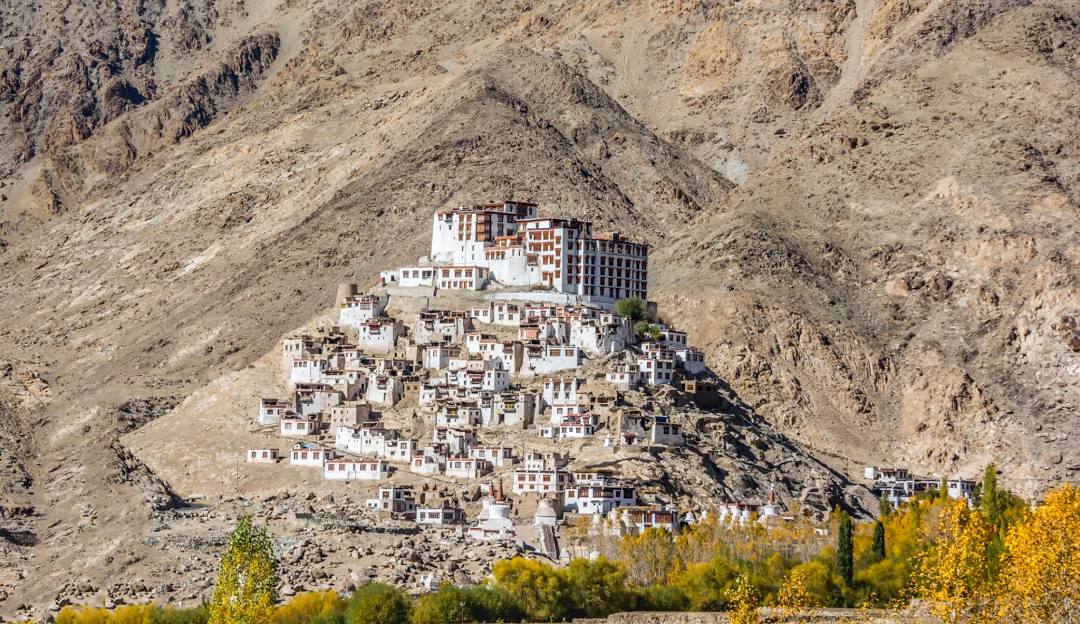
Final Travel Tips for Visiting Sakti
A journey to Sakti Village is a chance to slow down and truly experience Ladakh, but it also requires a bit of preparation. Remote, high-altitude, and rooted in tradition, Sakti rewards those who travel mindfully. Below are essential travel tips to help you make the most of your visit while being a respectful guest in this peaceful Himalayan enclave.
1. Acclimatize properly: At an elevation of around 3,800 meters, Sakti is not immune to the effects of altitude. If you’re arriving directly from Delhi or another low-altitude city, plan to spend at least 1–2 nights in Leh before heading to Sakti. Drink plenty of water, eat light meals, and avoid alcohol until your body adjusts. Symptoms like headache, nausea, or fatigue should be taken seriously—rest is key.
2. Dress for changing weather: Even in summer, the weather in Sakti can be unpredictable. Mornings are cool, afternoons warm, and nights often drop below freezing. Pack layers, including thermal undergarments, windproof jackets, gloves, and warm socks. Sun protection is equally important: high-altitude UV levels are intense, so bring a wide-brimmed hat, sunglasses, and SPF 50 sunscreen.
3. Carry essentials: Sakti has no ATM, no pharmacy, and only limited supplies. Bring enough cash (preferably in small denominations), personal medications, reusable water bottles, and extra batteries for your camera or phone. Signal can be weak or nonexistent in certain parts of the village, especially near Takthok Monastery, so offline maps and pre-downloaded guides are helpful.
4. Respect local customs: Sakti is a deeply spiritual place. Dress modestly, especially when visiting monasteries like Takthok and Chemrey. Always ask permission before photographing people, and never enter temples or prayer halls without an invitation. Be mindful during prayer hours, and avoid loud conversations or disruptive behavior. If you stay in a homestay, offer a simple thank-you with both hands—Ladakhi hospitality is generous, and humility is always appreciated.
5. Consider your footprint: In a fragile ecosystem like Ladakh, every visitor has an impact. Choose homestays over hotels, carry your trash out with you, and avoid single-use plastics. Support local artisans and farmers by purchasing handmade goods or fresh produce when possible. Walking instead of driving around the village helps reduce emissions—and it lets you notice more.
6. Travel with an open heart: The best experiences in Sakti are not planned. It could be a spontaneous invitation to share tea, a chance meeting with a monk, or watching a full moon rise over the mountains in perfect silence. Let go of your checklist, stay longer than you intended, and allow Sakti to unfold at its own pace.
Visiting Sakti is not just about checking a destination off your map—it’s about stepping into a rhythm of life that values simplicity, stillness, and spiritual depth. With a little preparation and a lot of curiosity, you’ll return with far more than memories—you’ll return with perspective.

Conclusion: Embrace the Quiet Magic of Sakti
There are places in the world where time softens, where the landscape speaks in whispers, and where travel becomes more than movement—it becomes meaning. Sakti Village is one of those rare places. It’s not grand in the way of palaces or peaks. There are no neon signs or viral landmarks. And yet, what it offers is something even rarer in modern travel: depth, silence, and a sense of genuine discovery.
In Sakti, the roads don’t just lead to destinations like Takthok Monastery or Chemrey Monastery—they lead inward. They wind through barley fields and past whitewashed stupas, around corners where time seems to bend and pause. They invite you to listen, not only to the stories of the village but to the quieter voice inside yourself. For some, Sakti is a spiritual retreat. For others, it’s a cultural immersion. And for many, it becomes a memory of stillness that lingers long after the journey ends.
You may come for the monasteries or the mountain trails, but what will stay with you is the way the sun warms the prayer flags at dusk, the way a stranger pours tea without asking your name, the way silence feels not empty, but full. These are the moments that define Sakti. Not tourist attractions, but human connections. Not adrenaline, but awe.
As Ladakh becomes more popular each year, places like Sakti remind us what travel can be—unhurried, respectful, deeply personal. So, take the detour. Spend an extra night. Walk the hidden path. Let the mountains change you quietly.
In a world of noise, Sakti Village offers the rarest sound of all: peace. And that is something worth discovering.

